On the Secret show today, Sarah and I talked about the Harris-Walz interview, more Conservatism Inc. stuff. And also about this Arlington Cemetery business. It’s a banger.
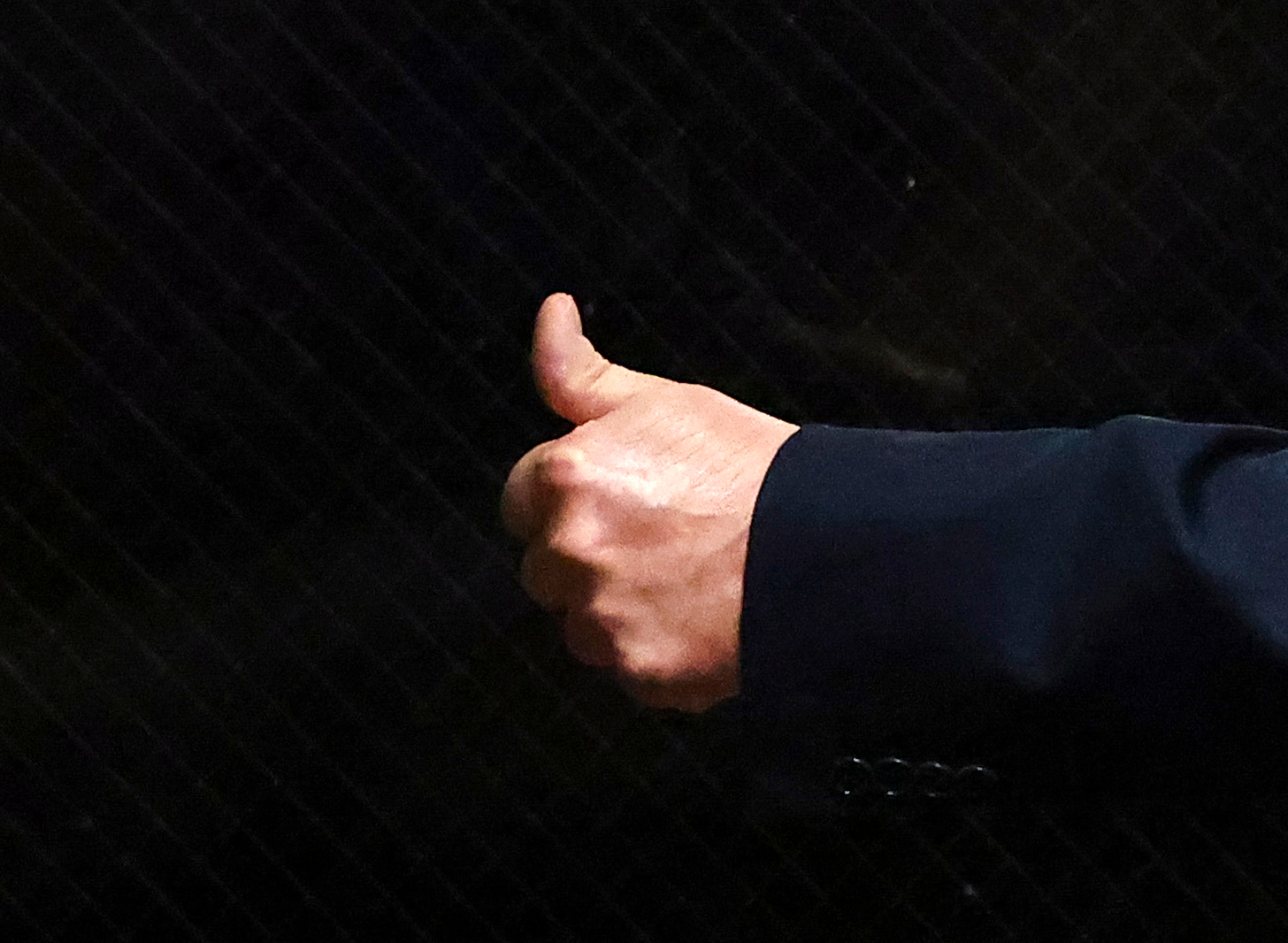
1. Thumbs Up
We go to cemeteries for all sorts of reasons. To pray. To honor the dead. To commune with the souls of the departed. Cemeteries are solemn places. We instinctively whisper when we visit them.
You do not often see people smiling in cemeteries, though that does happen from time to time.
But I have never seen someone give a thumbs-up over a grave. Until now.
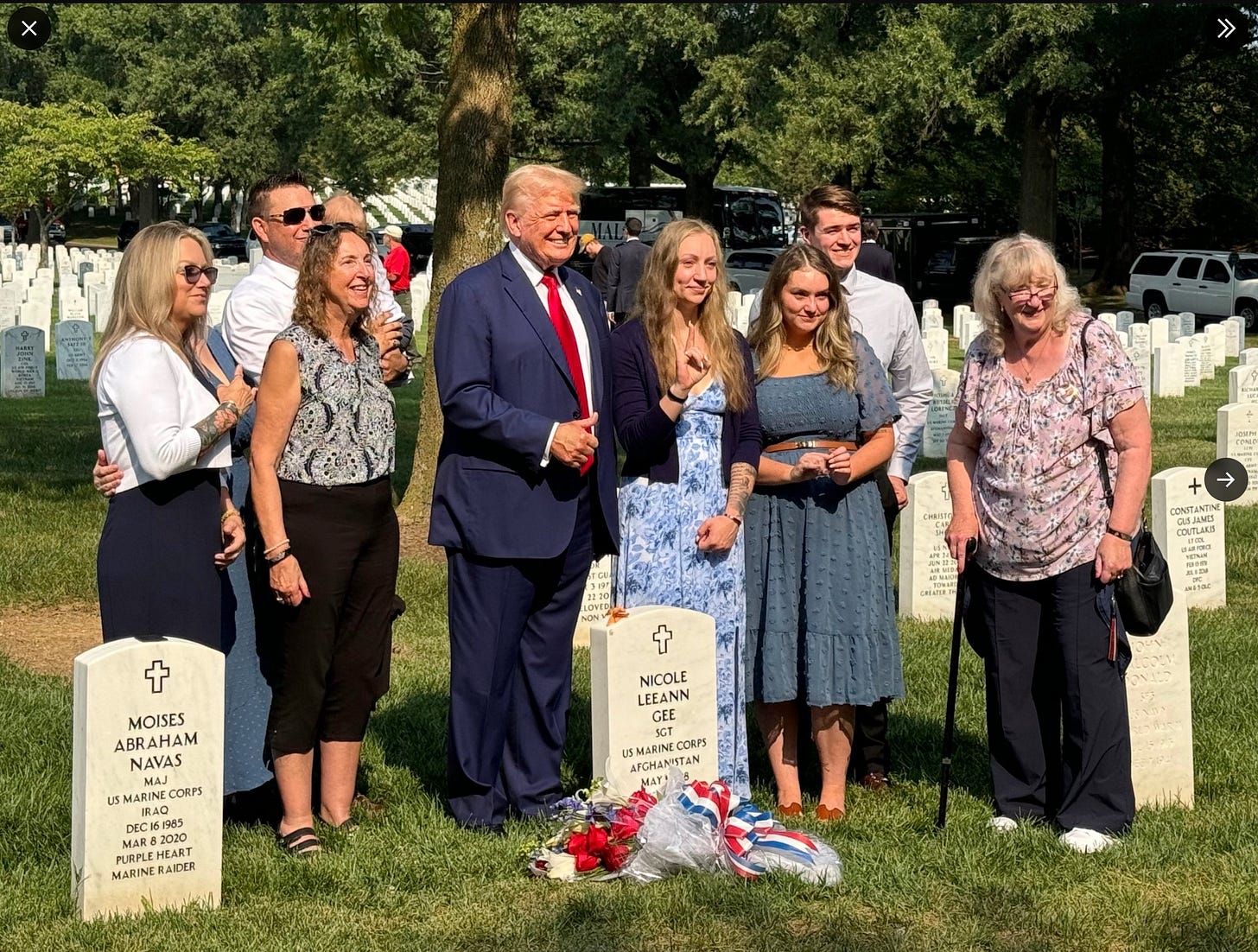
My first thought was that this man is a ghoul. Because this wasn’t a one-off slip. He did it twice.
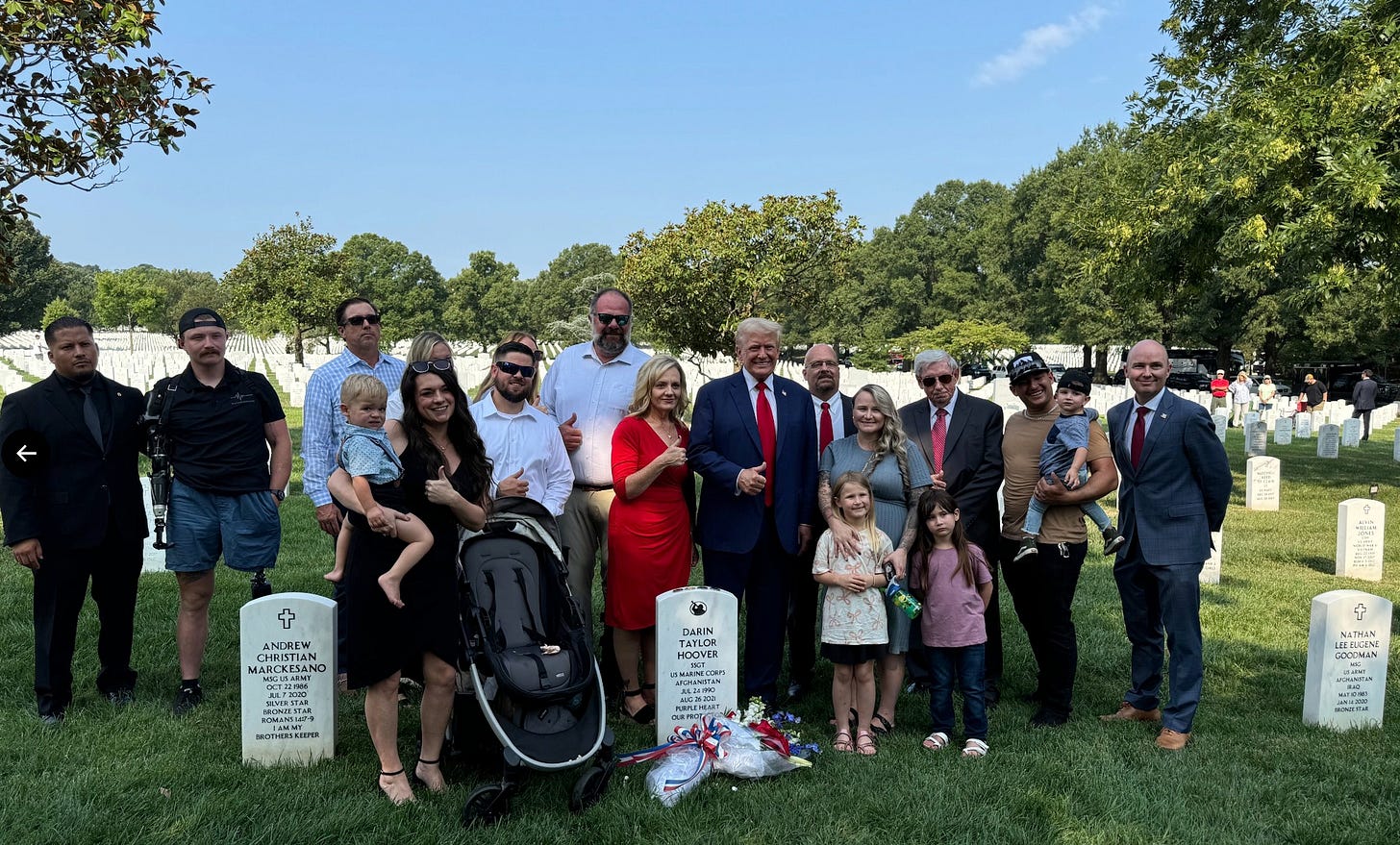
The fellow on the far right with the tight-lipped half-smile and his arms behind his back? That’s Utah Gov. Spencer Cox. Whatever you want to say about his participation in this stunt, at least he’s comporting himself like a normal human being.
He’s not grinning like a salesman while giving a thumbs up over a grave.
Who does that? I really want you to think about this for a minute. Do you know anyone in your life who would pose for a photo in a cemetery giving the thumbs-up?
I do not.
So the question is: What’s going on inside Trump’s mind here? What makes him do this? I think I have an answer.
What strikes me about these pictures is how banal Trump’s pose and expression are. This is a man who has eagerly put himself forward to be photographed for more than 50 years and long ago settled on a standard move.
That’s one trick famous people use. Another trick is pose-branding. Famous people sometimes adopt a specific pose to reinforce their personal brand. You may remember Miley Cyrus doing this with her tongue out. Well, Trump adopted skank-photographer/abuser Terry Richardson’s thumbs up as his go-to pose.1
Things only get weird because Trump is pathologically oblivious to context.
Let’s walk through a progression of photos.
Here we have Trump thumbs-upping with Andy Gipson, a low-level pol in Mississippi. Which is a normal thing to do.
And here he is with Boris Johnson, a slightly more important pol.
It’s a little strange to do with a former head of state, but whatever. So far, so good.
Now here Trump is doing the exact same thing with Kyle Rittenhouse. This gets sketchy because Rittenhouse’s celebrity derives entirely from the fact that he killed two people. And in the photo, Rittenhouse seems to know that he’s supposed to do something with his thumb, but he’s not sure what. It’s sad and a little pathetic.
You’ll note that Trump’s pose and facial expression in those three photos are identical. Now here’s another photo of Trump with the same grin and thumbs up.
Trump is the same even though the context is different. You may remember this picture (👆) because it was taken in August of 2019 following a mass shooting in El Paso. Trump was visiting victims of the shooting at the hospital. In this photo, his wife is holding a child who was orphaned by the killer.
Trump is with an orphaned infant, but his pose is the same as when he’s with the wannabe Mississippi politician or the slack-jawed shooter.
And it’s the same pose he pulled this week at Arlington National Cemetery.
Normal people are context-dependent. They behave differently depending on the situation.
That’s because they feel differently in different contexts. Just as a for instance: A normal person would feel differently holding a baby who’d just lost his parents than he would when meeting a celebrity.
But even when a person doesn’t experience feelings that are influenced by context, we understand that society has norms which require us to act differently in different contexts. So, for instance, you might not know anyone who is buried in a given cemetery, but when you walk into the cemetery, you intuitively understand that you should not act like you’re at a ballpark.
For Trump, he is the context.
In Donald Trump’s mind, he is the frame of reference that everything else enters.
Trump isn’t meeting a kid who killed people, that kid is meeting him.
Trump isn’t with an orphan. That baby is part of his photo op.
Trump isn’t standing over a grave. The tombstone is a piece of his campaign for president.
And that’s why, in every one of these pictures, Trump is wearing the exact same smile and giving the exact same thumbs-up. Because to Trump, there is no context but Trump.
2. You Guys
USA Today has a long piece about Ahmadullah Karimi. You guys saved his life.
Ahmadullah was an Afghan interpreter who helped American soldiers during the war. He worked with—and became friends with—our buddy Will Selber. After the fall of Afghanistan, Ahmadullah and his family were on the run. Selber was doing everything he could to get them to America, and when he put the call out right here in this newsletter, you guys responded. You gave enough money to keep the Karimi family hidden and safe until their visas came through.
Today, the rest of America is hearing Ahmadullah’s story:
Selber, with the help of fellow veterans, found the family safe house to stay hidden. He tapped his veteran community, setting up a GoFundMe campaign to help his former interpreter seeking about $7,000. It drew five times that much within days.
Finally, in April he was approved to go.
Selber and other supporters bought him a ticket instead of waiting what can be months for one provided by the government. He even had a U.S. letter stating that he should not be detained.
But Selber knew it could go sideways. He even told Karimi he might have to make a run for it.
On the way to the airport, his son was happy. Karimi tried to hide his nerves while his driver, whose identity he’d confirmed with a code phrase, took routes to avoid police checkpoints.
But all the support paid off. Karimi said that with help he got inside and through customs without being challenged or turned away.
Settling into his airplane seat on a flight to Qatar, he buckled his seatbelt and exhaled.
In mid-April, Selber stood inside Boston Logan International Airport, wearing a shirt that read, Operation Enduring Freedom.
Soon Karimi walked from the gate with his wife, daughter and their son, who was dressed in jeans and tennis shoes, meeting Selber in what he described as an “unbelievable” moment.
“He did a lot for me and my family,” he said. “He saved my life.”
Selber, too, could finally relax after many nerve-wracking months. “I was just like, oh my God, I can finally rest,” he said.
Selber drove the family about 180 miles north to Montpelier, Vermont, a town of about 8,000 residents set along the Winooski River, where they would be resettled with the help of refugee agencies and friends.
They soon moved into their first apartment. Karimi was delivering food for Door Dash and Uber Eats. By late August, he started a new job as a cashier at a grocery. His son Abdullah was starting school and his wife was learning English and taking her daughter to the park.
“I’m really happy for my wife and my kids. They can go to school. They have freedom here. They have all the rights that a human should have,” he said.
Read the whole thing. That GoFundMe was you guys. You made this story possible.
If we never do anything else at The Bulwark I’ll view this thing of ours as a success. Because it brought together this community and together you saved these four lives.
Thank you. From the bottom of my heart.
And thank you, Will. For everything you’ve done and everything you will do in the coming years. You, sir, are a great American.
3. A Bad Day
My friend Matt Labash is also a great American. This essay of his will give you a lot of feelings.
On the way back to the house, driving along a road that overlooks our home river — its marshlands teeming with blue heron and bald eagles — we drive around a bend and encounter a middle-aged man with his SUV parked in the middle of the street, his door open. He is frantically shouting into his phone. He’s wearing what looks like a Scoutmaster uniform — the boyish cap, the woggle-secured neckerchief, the works. I contemplate leaning on my horn to get him to close his door, allowing for easier passage. But he looks so serious about conveying something to whoever he’s talking to, I resist, and just scoot by him. It’s about then I pick up the sight of an older man — possibly in his early seventies — about 30 yards away. His arms are covered in gauzy bandages, with a little blood seeping through. He is stumbling around the middle of the road. And then he teeters off of it, looking as unsteady as a hippo on a tightrope. He face-plants straight into a weedy gulch.
I immediately pull over, get out, and wrap my arms around him to help bring him to his feet. “I’m okay, I’m okay,” he insists before I do, looking like a struggling turtle turned over on its carapace — though he is on his stomach, but similarly unable to move, as his limbs spasm to regain uprightness. Alana runs down the road to find out what the Scoutmaster knows — he doesn’t know much, it turns out, but he is now alerting a 911 operator.
The second I pull the man up alongside me, I catch an alcohol-infused gale. He smells like a brewery. At first, I think maybe he is having some coronary episode. But I ask him outright, “You’re drunk, right?” He looks at me with a flat stare, as if he’s been caught red-handed and has no alibi. “Yes,” he admits. While trying to gather whether he’s in any sort of real medical jeopardy — he insists he’s fine — I ask him if he lives around here. Yes, he says. He gives me an address. “I just need to get home,” he pleads. I feel sorry for him. I’ve been there, brother. . . .
I go find out what’s what from the Scoutmaster. The latter seems mostly in the dark, too. Scout just happened to find him wandering and bleeding, and bandaged his wounds. He’s trying to get an EMT to pick the guy up. But the guy has insisted to me he doesn’t need any medical treatment, so I call Scout off, and tell him I’ll take him home. Scout wants to make sure: “You’ve got him, then?” Yes, I assure him. A successful human-misery baton handoff.
Alana and I get in the truck, she in the backseat, since my new passenger has already helped himself to shotgun. I ask for his address again. Alana plugs it into her GPS, though he sloppily insists he can get us there without technological assistance. I’m not even sure his address is real. I ask his name. He tells me it’s “Roy” (I’ve changed it), and that he’s lived “right up the street for nearly 50 years.”
We ride quietly for a while, then I try to make polite conversation. “So, what’s your poison of choice?” I inquire. “Beer,” he slurs. “Why do you ask?” I pity Roy. It’s a tough road, being a beer drunk. You generally have to drink a lot more beer than you do if you were say, a whiskey fiend, to get the same job done. Though you not only sustain the same liver damage, but also suffer the additional bloat, even though Roy looks as wiry as a Whippet.
I catch my wife’s eyes in the rearview, and she looks at me in a way that says, “WTF? You gonna compare favorite bourbons with the town drunk next?” But I’m just trying to make him feel at ease, as it has to be embarrassing for him, face-planting on the side of a country road. We ride in silence for another minute or so, when Roy volunteers: “My wife died two years ago. Cancer. It ate her up pretty fast.”
Read the whole thing. Matt’s the best.
I’ll go the full Zoolander here and give Trump credit for originality.
Terry Richardson’s thumbs-up pose is ironic and campy.
Trump’s thumbs-up pose is post-camp: Yes, it’s fake. But Trump is pretending that it’s sincere.
Look at photos of Trump with his normie fans and you often see the difference between his expression and the expression of people who are imitating him with utter sincerity because they’re not in on the joke.
Those are some of the saddest pictures.



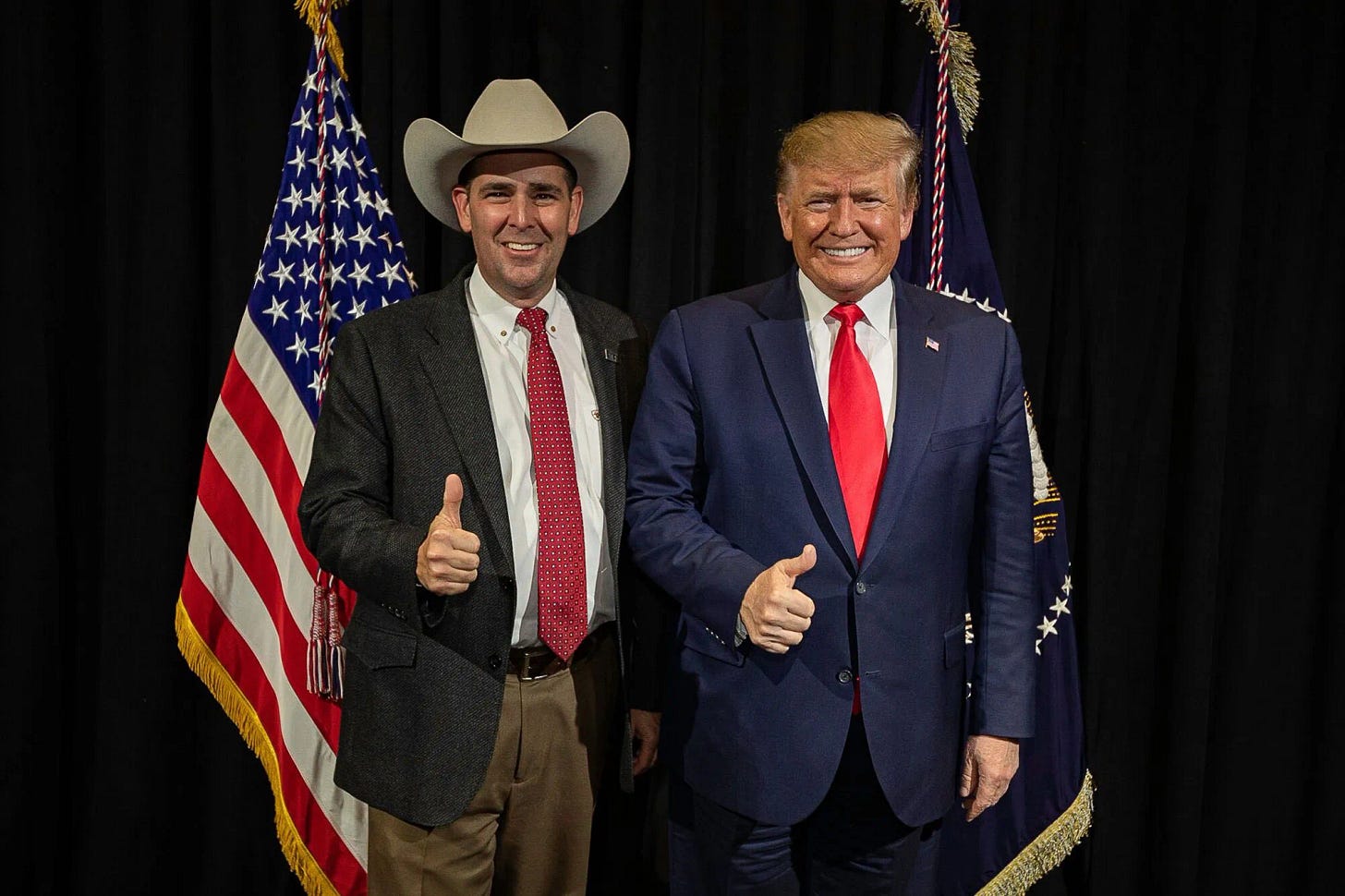
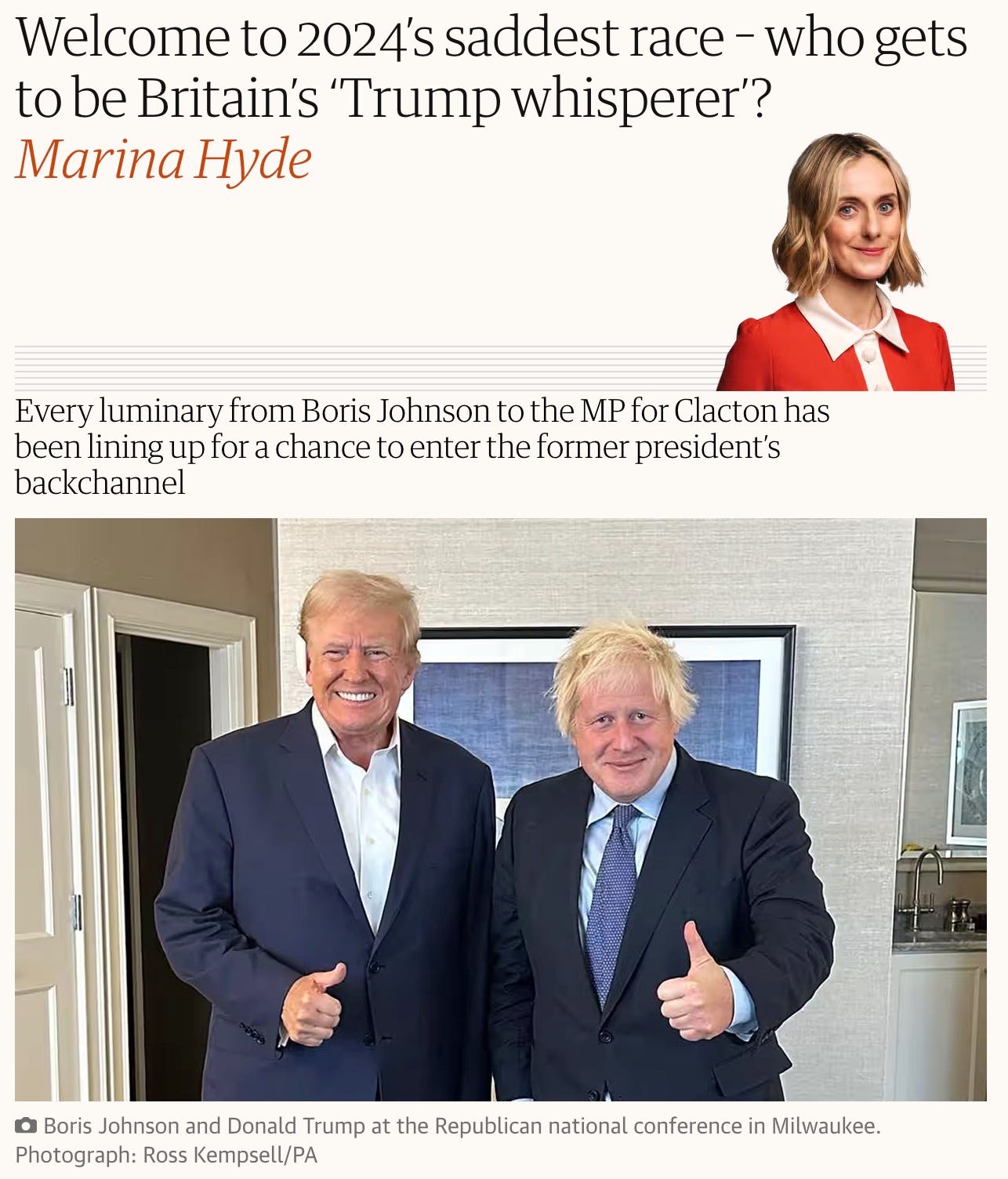
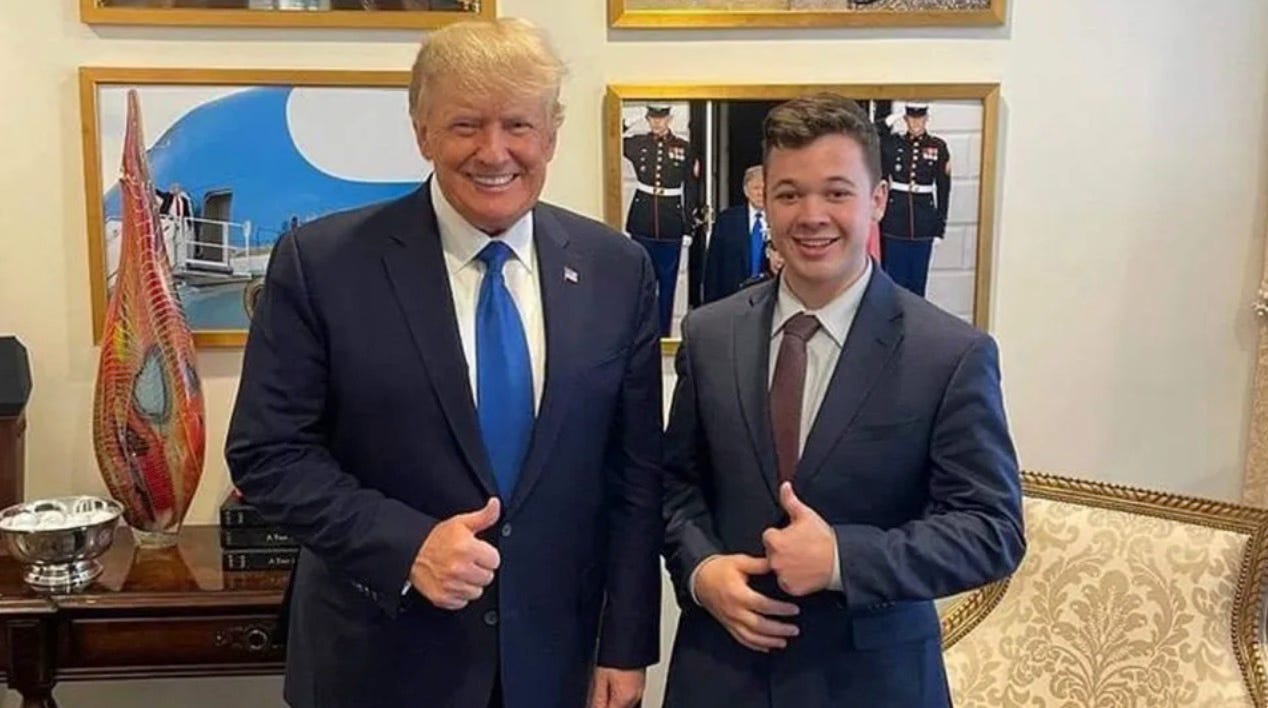
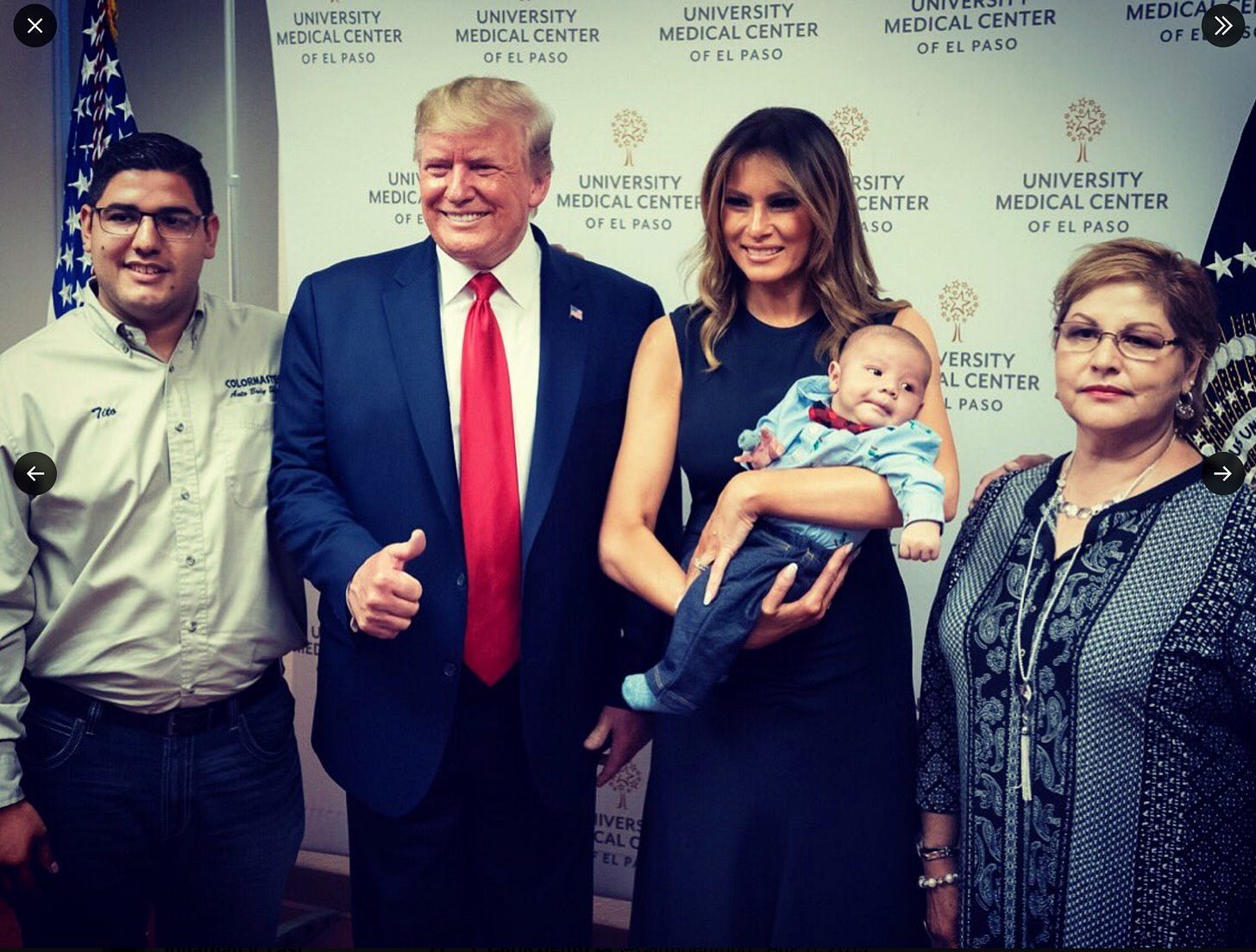
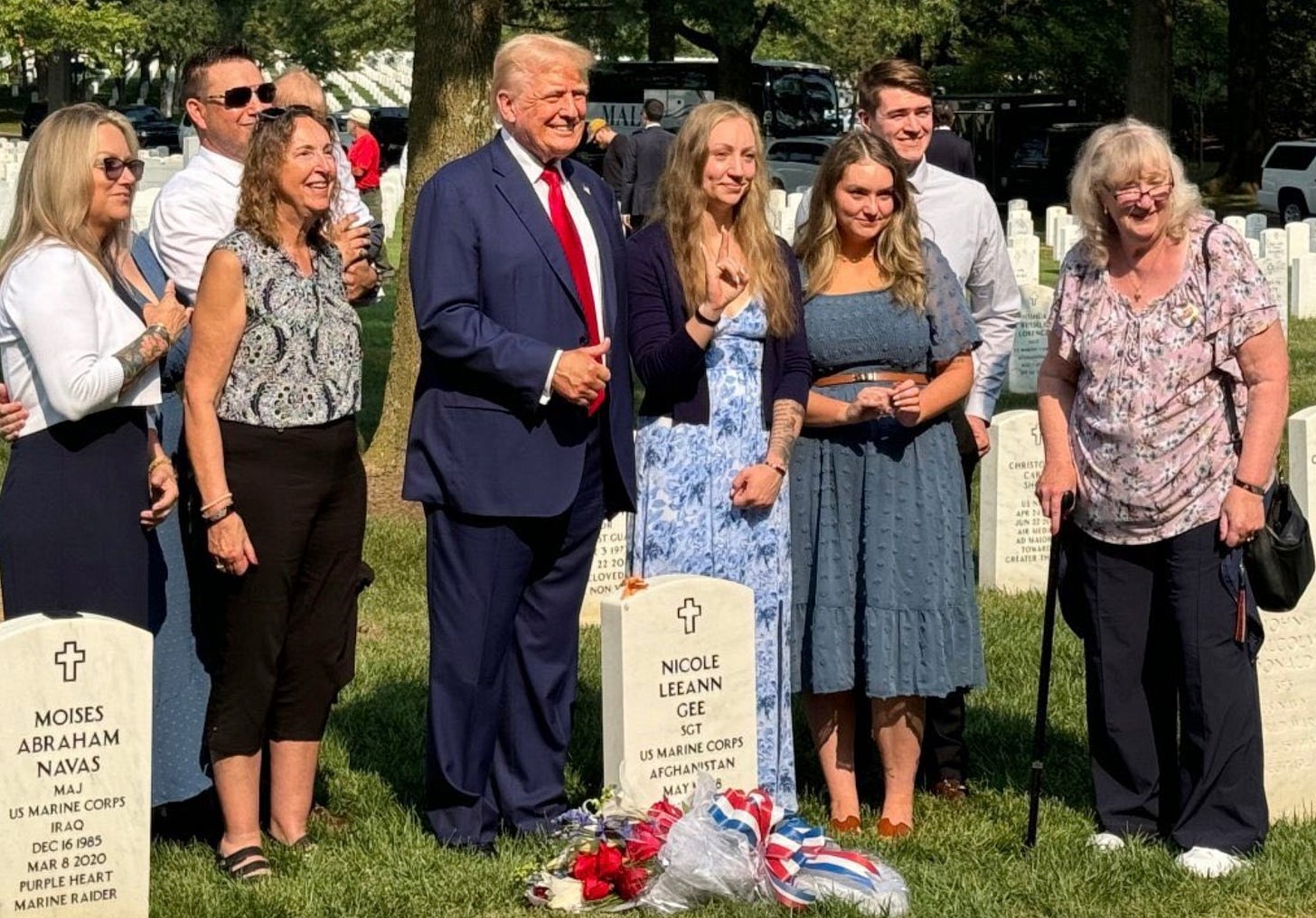
One of the many reasons so many of us are jvl fanpeeps is that not a single other pundit in this great land could produce the brilliance of the thumbs up discussion.
That picture. That fucking picture. I "can't even" with this shit today. What a fucking garbage human being.